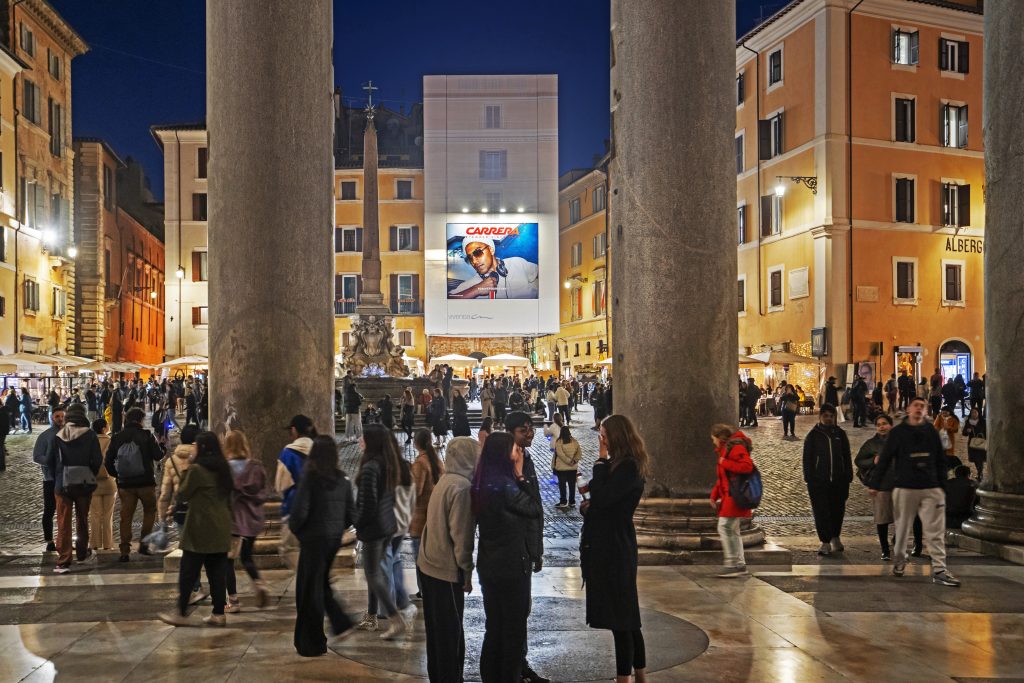
In the historical and artistic heart of the capital, the space faces the extraordinary and solemn Pantheon in Piazza della Rotonda (the most visited state museum site in Italy, over 7 million visitors annually). A stone's throw from the government buildings, intellectuals, politicians and freelancers gravitate here. In the evening, young people also arrive to crowd the area's wine bars, cafés and restaurants. A transversal area: Italian and international, culture and entertainment, worldliness and tradition.
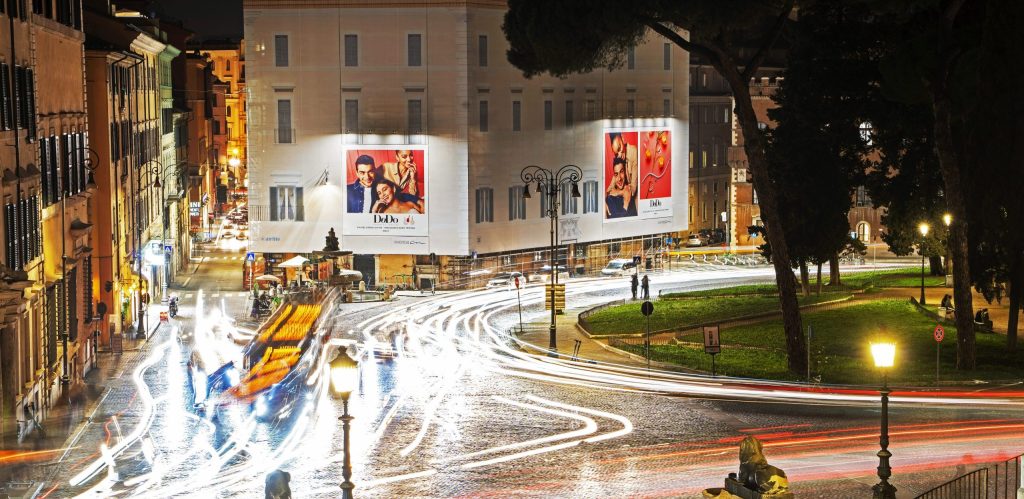
Spectacular triple advertising installation set up on the noble Palazzo Muti Bussi in Via d’Aracoeli, on the slopes of the Campidoglio. Situated in the historical Campitelli district, it offers a suggestive view and an exceptional scenery: the Quirinale, the Trajan’s Forum, Palazzo Venezia and the buildings of the Angelicum convent can be admired at a glance. Nearby are some of the city’s landmarks: the Colosseum, the Roman Forum, the Imperial Forum, the Colle Oppio, the…
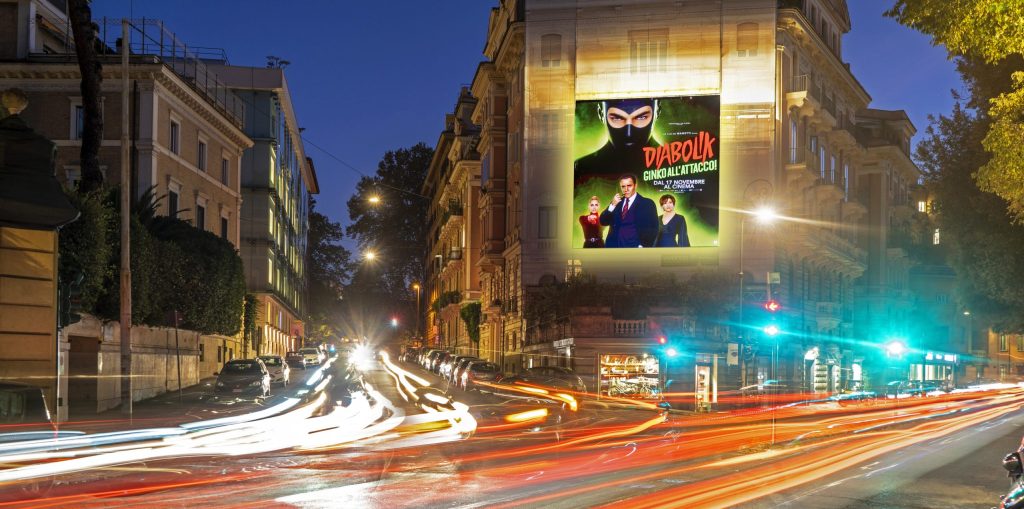
The park of Villa Borghese occupies a vast area in the heart of the city. The villa contains buildings, sculptures, monuments, and fountains, the work of illustrious Baroque, Neoclassical and Eclectic artists, surrounded by centuries-old trees, ponds and large open spaces, created with great care. A few metres away is Via Puccini, where the area’s car traffic converges.
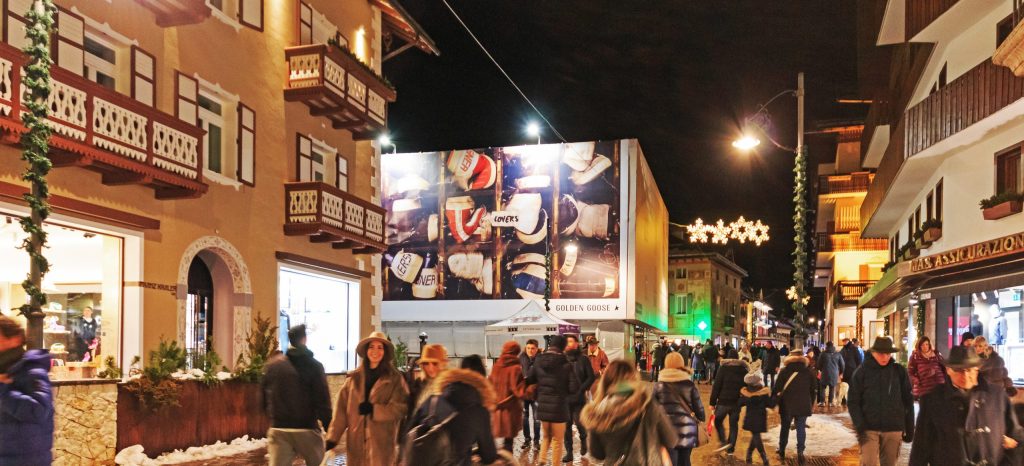
In the beating heart of the Queen of the Dolomites, the advertising installation faces onto Corso Italia, in the most central and prestigious location of the shopping street par excellence, just a few steps away from the world-famous Cortina bell tower and the Cooperativa (6 floors of exclusive clothing, accessories and objects).
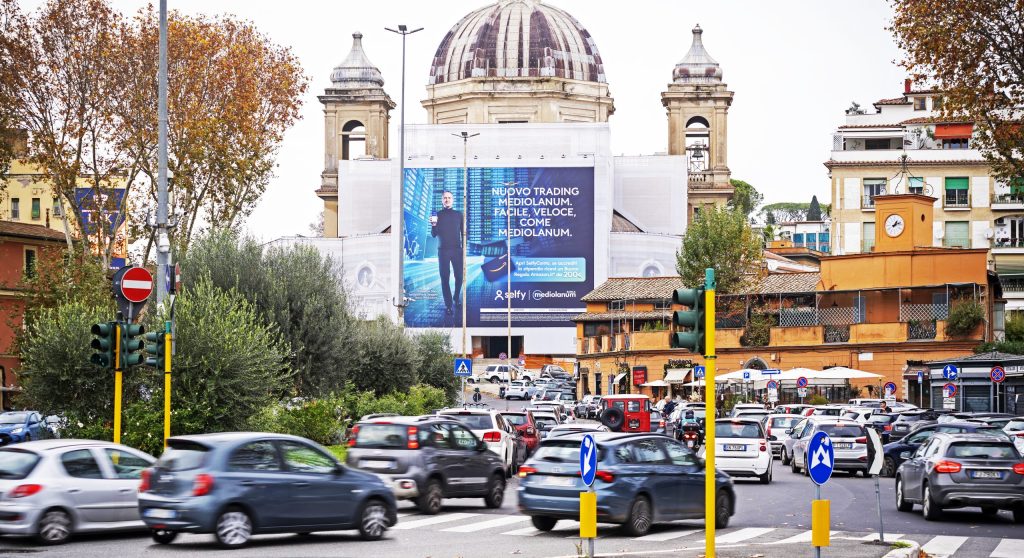
The Church of Gran Madre di Dio, the site of the advertising installation, majestically dominates the large Piazzale di Ponte Milvio. It is located in one of the most elegant residential areas of northern Rome. The square is a nerve centre of heavy traffic, coming both from the nearby Foro Italico and the Via Flaminia, and daily hosts the busy local market and the Antiques Market.
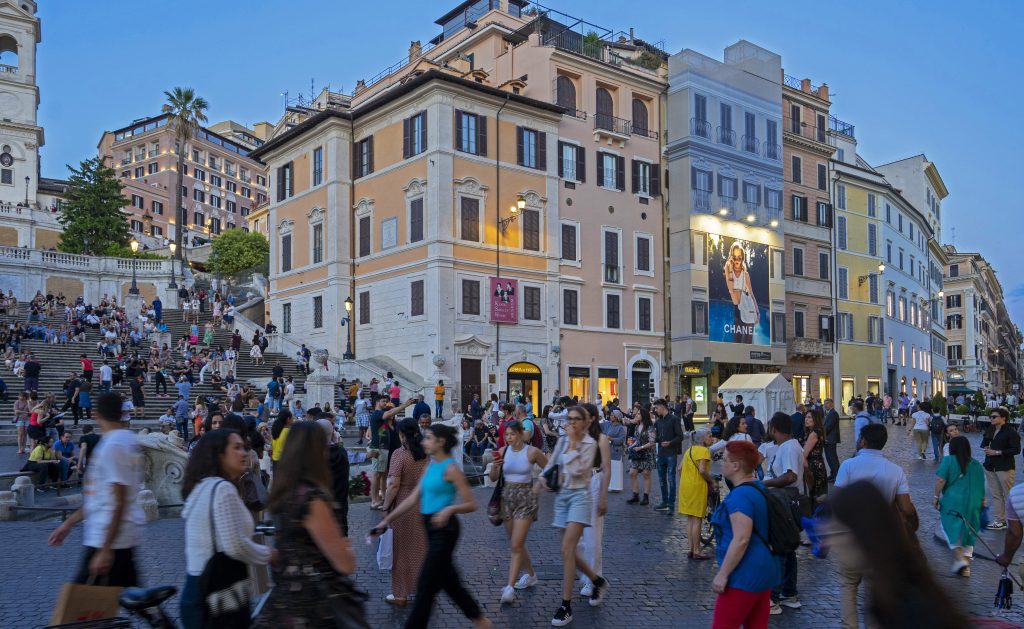
An advertising installation placed in the foreshortening between Piazza di Spagna, Trinità dei Monti and ‘la Barcaccia’. It is impossible to argue the most famous square in the world: nor to describe the attractions of the historical and artistic heritage, nor to list the professional offices, the headquarters of embassies and companies, including international ones, which, together with the world’s most important commercial showcases, can be found in the surrounding area.
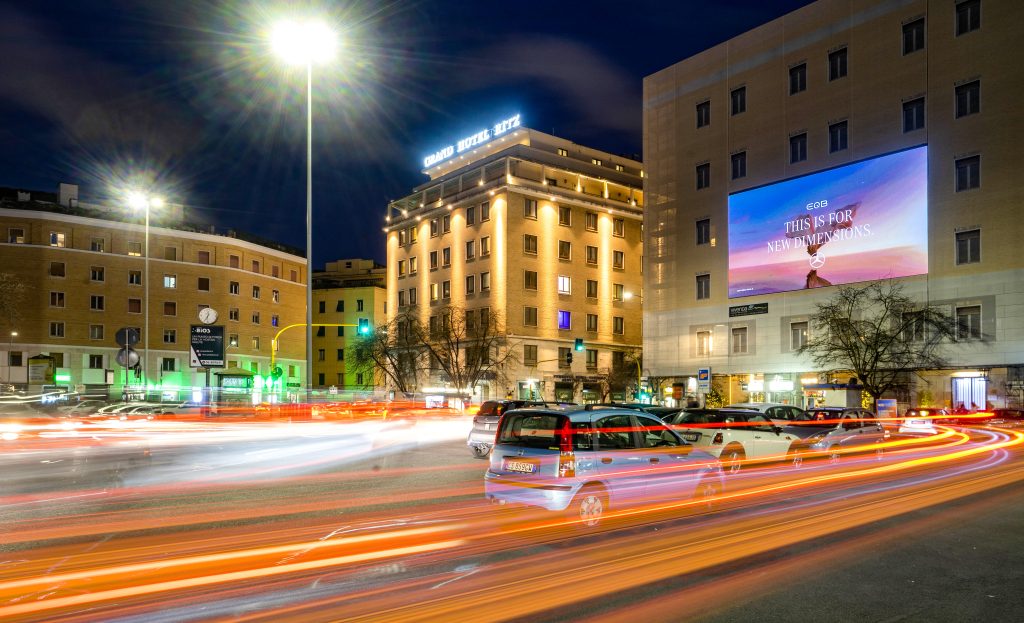
In the heart of the Parioli quarter, the advertising space dominates Piazza Euclide from above. Traditionally one of the most elegant areas of the capital in residential terms, it is the hub of the most exclusive professional, financial and commercial activities. Nearby: the celebrated Auditorium – the Villa Glori Gardens, the Parioli Theatre, nightclubs and restaurants among the most fashionable in Rome.
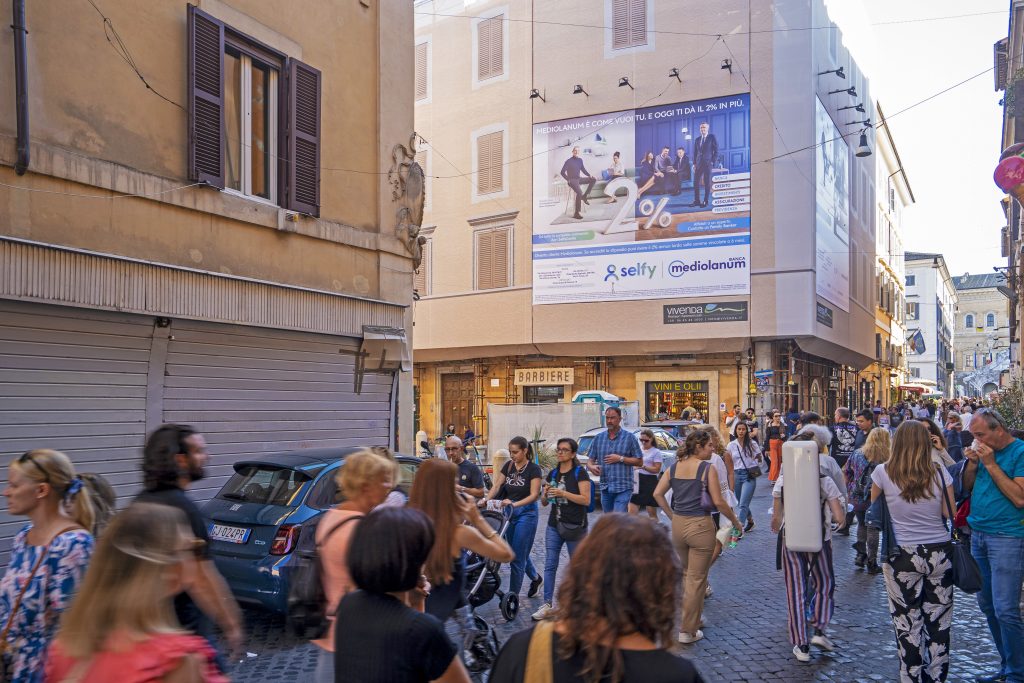
Prestigious double installation located on the corner of Via Dei Baullari and Piazza del Teatro di Pompeo. Nearby are some of the City’s landmarks: Piazza Navona, Piazza Farnese, Corso Vittorio Emanuele II and Piazza Campo de’ Fiori. In the mornings it hosts the historic and picturesque market; in the evenings, with its wine bars and traditional restaurants, it is the most usual rendezvous for social life.
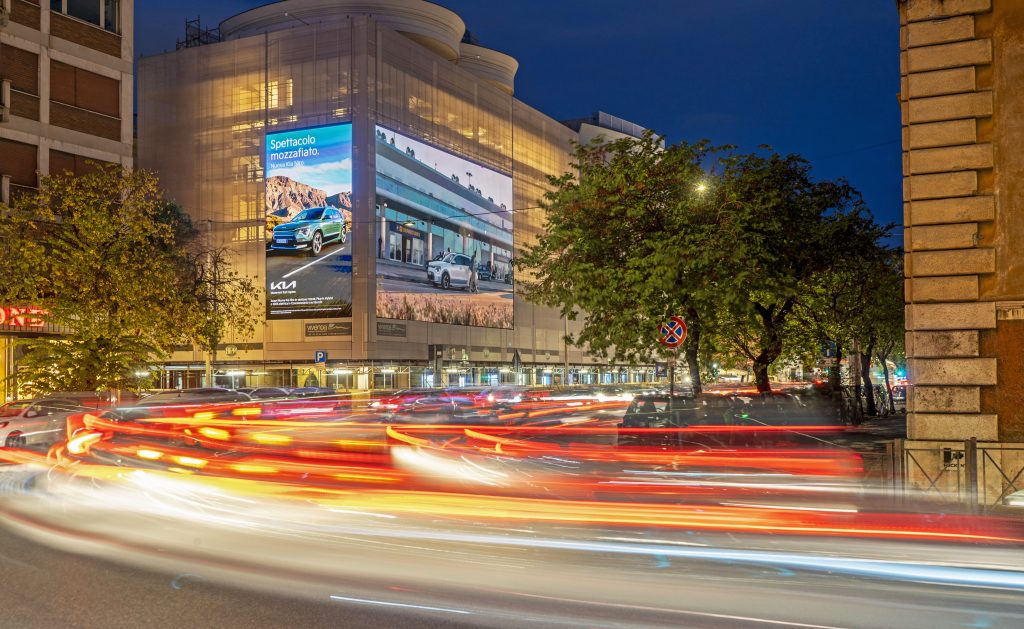
Spectacular installation linking Piazzale Flaminio to Piazza del Popolo. Here converge both the public transport stations and the car traffic of the Lungotevere and the Muro Torto, congested at all hours: It runs along the perimeter of the ancient Aurelian Walls as far as Via Veneto and Porta Pia, and connects the northern part of the City.